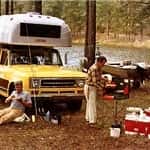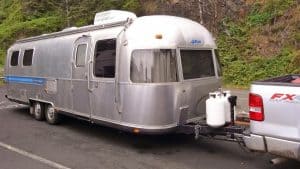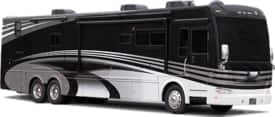There are so many boondocking tips being observed, noted, and applied by several individuals involved in RV traveling and wild camping activities over the years.
Even so, I’ve got a couple of boondocking tips to share with you from my humble wealth of experience.
Meanwhile, from our previous discussions, I want to believe you’re already familiar with the concept of boondocking by definition.
Tips For Boondocking Some Tips You Should Know. The tips we are talking about, aren’t limited to the following but include. Tips Based On Boondocking Rules And Regulations. Some Tips Based On RV Set Up For Boondocking. Tips Based On Accessing Necessities Like Water, Food, etc While Boondocking.
But for the sake of those who don’t know yet and would like to know, boondocking is basically camping around uncivilized areas without hookups (i.e water supply, shower, sewer, conventional power/electricity supply, et cetera).
In some instances, you may have also heard of it being referred to as “dry” or “wild” camping.
Contents
Tips Based On Boondocking Rules And Regulations:
- If you plan to boondock around any state-owned ground or facility, always be sure to seek permission from the regulatory agencies (i.e BLM, National Forest Service System, et cetera).
- If you intend to park your RV overnight in a parking lot, always ensure you confirm from an authorized individual to know whether or not it is allowed.
- Ensure that you check for existing posted rules or policies. To know whether or not RV travelers like you are mandated to vacate the area by a specific period of time. (Like In the morning for instance).
- Regardless of how nice or cool it is to have a free place to park your recreational vehicle while boondocking. Please do not overstay your welcome.
- Maintain orderliness by ensuring you don’t bust out the grill, table, chairs, and open the awning.
- Seeing that the hydraulic jack is capable of causing damage to parking lots, even to asphalt materials. Avoid using yours (except if need be, and if is allowed) even then use a foot pad to protect it.
- Don’t just avoid littering, always make a concerted effort to leave your environment cleaner than you met it or found it.
Tips Based On RV Setup For Boondocking:
A Pop-up 4×4 Truck Camper:

Even so, it would be a good recommendation for you.
- ) If you’d like to camp far off the beaten path, this particular truck camper could climb steep inclines and also avoid low tree branches.
- ) It can also be detached so you could utilize your truck for four-wheeling, collecting firewood, and perhaps hauling things like kayaks to the lake, etc.
- ) It is small in size, highly maneuverable, has a low profile, lightweight, low in cost, can tow a boat or vehicle as you want, and also has the great off-road capability.
- ) It doesn’t have much living space you may desire, it is also known for small holding tanks and battery compartment, plus poor insulation due to canvas use on pop-up walls.
A Hard-side 4×4 Truck Camper:

- ) This particular type of Truck Camper is not the most agile or nimble, all-season boondocking rig that you would enjoy.
- ) You won’t be able to rock crawl or tackle narrow, heavily forested back roads or paths, due to its moderately sized profile.
- ) It lacks the luxurious accommodations of a large motor home or fifth wheel. But offers moderately sized holding tanks, plus the equipment and accessories you need to camp comfortably while off the grid.
- ) Some models come with slide-outs that increase the living space but also increase weight.
- ) It can also be detached so you could utilize your truck for off-roading, collecting firewood, and perhaps hauling your boats to the lake.
- ) It is small in size, highly maneuverable, and is good for all seasons. It can tow or pull a boat or vehicle to your desired location, and also has some good off-road capability.
- ) It has a seemingly high profile status, meager or small living space and battery compartment.
A Pop-up Trailer:
- ) You could practically tow this low cost, low profile, RV – anywhere with any other vehicle.
- ) You won’t find luxurious accommodations in this type either. But you surely will find two large sleeping areas, a small kitchen, and a very large or sizable sitting area. This is enough to keep most families happy and comfortable.
- ) Seeing that most types provide only a small freshwater tank. You certainly have to bring extra water with you if you plan to boondock for a long or extended period of time.
- ) Some of the larger, fancier models are built or equipped with a platform that you can haul a quad or a couple of motorcycles. There are some others that are built or equipped with a toilet and small shower.
- ) You should also notice it is detachable and lightweight. It also has high ground clearance, and extreme or great off-road capability.
- ) It has poor insulation due to canvas use on pop-up walls, and you also won’t find a bathroom installed in it.
A Travel Trailer:

- ) This category is available in numerous sizes and floor plans (which gives you the opportunity to make choices or have several options).
- ) It is also very affordable. Meanwhile, this valued or venerable RV (Recreational Vehicle) is a great choice for couples and families.
- ) Regardless of some of its off-road limitations, the axles can be flipped to enhance or increase ground clearance, which will then allow it to be taken on very rough roads.
- ) Some models have fairly large or sizable holding tanks, storage areas, and can support up to two (2) batteries on the A-frame.
- ) It can also be detached to set up camp so your pull or tow vehicle could be used for other activities.
- )It can also be practically pulled or towed by anything with a sizable or large enough tow rating.
- ) It is obviously not very maneuverable, has a moderate profile, and limited off-road capability.
A Fifth Wheel Trailer:

- ) It is paramount to note that Fifth Wheel boondocking is obviously a great choice if you like your elbow room and have children. Sounds hilarious but that’s a simple truth.
- ) Its high profile and large size will restrict you from accessing ”easy to reach” level boondocking areas like those found at Quartzsite, Arizona.
- ) All features you would want for boondocking (such as large holding tanks, a large battery compartment, and adequate storage) can be found in this RV (Recreational Vehicle).
- ) It also has a huge amount of roof space that can accommodate several solar panels.
- ) Due to its size and ease of towing, it’s a well-known and very popular choice with full-timers and boondocking enthusiasts.
- ) It has poor maneuverability and poor off-road capabilities as well.
- ) It is also designed with every attribute or sense of comfort and livability.
A Class ‘A’ Motor Home:

Photo furnished by Thor Motor Coach
- ) This type is limited to ”where it can go” but could actually afford you the comfort you desire.
- ) It is up to 40 feet long, and also offers large or copious amounts of storage, plentiful or multiple elbow room, and sizable holding tanks.
- ) Its massive roof and the large battery compartment can accommodate a first-rate solar power system. With multiple banks of batteries and solar panels, it would be great for some extended boondocking.
- ) It is also the most expensive class of RV (Recreational Vehicle) you could find in the market.
- ) It is famous or a very popular choice with full-time RVers and for you as an individual who loves to boondock.
- ) There’s inside access you could see between living and driving areas.
- ) It also has limited off-road capability, poor maneuverability, and a high profile status.
A Class ‘C’ Motor Home:

Photo Courtesy of Thor Motor Coach
A Class C RV is built on a truck or van chassis. An attached cab and an overhead bunk is usually part of a Class C motorhomes design. It offers many of the amenities of larger RVs and is more powerful than a smaller RV. Class C motorhomes usually range in size from 23 feet to a little over 36 feet. But the largest usually top out around 28 feet or so.
- This, of course, is a terrific, all-terrain boondocking RV (Recreational Vehicle) that you would enjoy and greatly appreciate.
- It’s 4×4 capability, low profile status, and low center of gravity affords it the opportunity to practically go anywhere off the beaten path.
- You won’t find lots of headroom space, or large holding tanks, or huge storage space in this category.
But you surely will find everything else you need to live comfortably while you camp in the wilderness or boondocks. Here are some other benefits.
- ) You don’t have to leave your RV (Recreational Vehicle) in a bid to move from the driving area to the living area unless you want to.
- ) It is also an important consideration for safety and when camping in bad weather. I recommend the same for you.
- ) It is very high in terms of ”how much it costs.”
A Toy Hauler:
- ) This particular type has enough or multiple living and sleeping areas for you and the kids. Plus it has ”a garage” to haul your favorite toys.
- ) It is specifically designed or built for individuals who are comfortable with boondocking from the factory.
- ) It also comes with massive freshwater and wastewater holding tanks, a large or battery compartment, a generator, and as well a gas station to fill your toys.
- ) Its large, slightly-angled roof can also accommodate numerous solar panels; (this obviously is a big plus for off the grid camping).
- ) It is also very hefty or heavy, and not very maneuverable. This, of course, would greatly limit you to flat, easy access areas like those found in the desert or thereabout.
- ) The toy hauler also comes in both a bumper pull and in a 5th wheel version.
A Class ‘B’ 4×4 Conversion Van:

Photo Courtesy of Martin Stone
- ) This type doesn’t offer large holding tanks, or much elbow room, and can only accommodate two (2) persons to get a comfortable sleep.
- ) It is probably the best off-road RV (Recreational Vehicle) you could find in the market today.
- ) Regardless of it not having a full bathroom (most of these only has a toilet), it still offers features you would need to camp comfortably while off the grid.
- ) It is indeed a perfect rig for you being a couple who really enjoy hiking, rock climbing and as well the great outdoors, open air, or nature in its entirety.
- ) It is quite small in size, an all-terrain vehicle, highly maneuverable, it also can pull or tow, it has a low profile unit or status, and as well a high clearance.
Tips Based On Accessing Necessities (Like Water, Food)
Water:
- ) A good number of Recreational Vehicle ”dumps and dump sites” do have drinkable water apart from just private, public, dump stations scattered across the country.
- ) You could also rely on the services of ”Pilot Flying J Travel Centers” and other truck stops across the nation. They can give you access to not only just water, but also restaurants, and some have dump stations. Some even offer a discounted rate on each purchase of gasoline or fuel and propane that you purchase.
- ) A couple of National Forests that are adjacent to National Parks does have dispersed campgrounds with very good communal water fill stations you could access.
- ) You could also get water from places likes highway rest areas, tourist welcome centers, et cetera.
- ) Getting water jugs for your boondocking adventure is perhaps the easiest method for addressing the unavailability of water.
Food:
Your food budget would remain unchanged or sometimes vary based on ”what” and ”how” you eat.
That being said, seeing that you know the capacity of your stomach and your’ eating habits.
You could easily figure out how much it would cost you for the period you intend to stay. Then you could purchase the things you want to eat before traveling.
This method would be good. Because you know how much you can consume and eat better than anyone else does.
Additionally, you could also access food items in places like restaurants of Pilot Flying J Travel Centers, and other truck stops.
